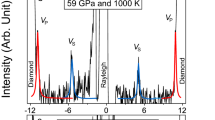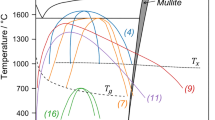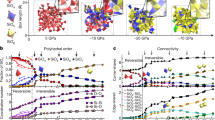Abstract
GREIG1 discovered that many metal oxide–silica systems exhibited liquid immiscibility at high temperatures. He found that the less siliceous liquid (as well as a range of adjacent compositions) usually devitrified in part, even on rapid quenching. As devitrification advanced the larger particles could be identified as cristobalite. However, the smaller particles, termed ‘dots’, could not be identified using the microscope. In the absence of any other positive evidence, and because they had a lower refractive index than that of the glass, it was concluded that the ‘dots’ were probably fine-grained cristobalite.
This is a preview of subscription content, access via your institution
Access options
Subscribe to this journal
Receive 51 print issues and online access
$199.00 per year
only $3.90 per issue
Buy this article
- Purchase on Springer Link
- Instant access to full article PDF
Prices may be subject to local taxes which are calculated during checkout
Similar content being viewed by others
References
Greig, J. W., Amer. J. Sci. (5), 13, 1 (1927); 14, 133 (1927).
Schleede, A., and Gruhl, A., Z. Electrochem., 29, 411 (1923).
Author information
Authors and Affiliations
Rights and permissions
About this article
Cite this article
WILLIAMSON, J., GLASSER, F. A New Silica-like Phase with Simple Cubic Structure. Nature 201, 286–287 (1964). https://doi.org/10.1038/201286a0
Issue Date:
DOI: https://doi.org/10.1038/201286a0
This article is cited by
-
Untersuchungen über die Bildungsbedingungen von Quarz im Temperaturbereich zwischen 100° C und 250° C
Beiträge zur Mineralogie und Petrographie (1964)
Comments
By submitting a comment you agree to abide by our Terms and Community Guidelines. If you find something abusive or that does not comply with our terms or guidelines please flag it as inappropriate.



